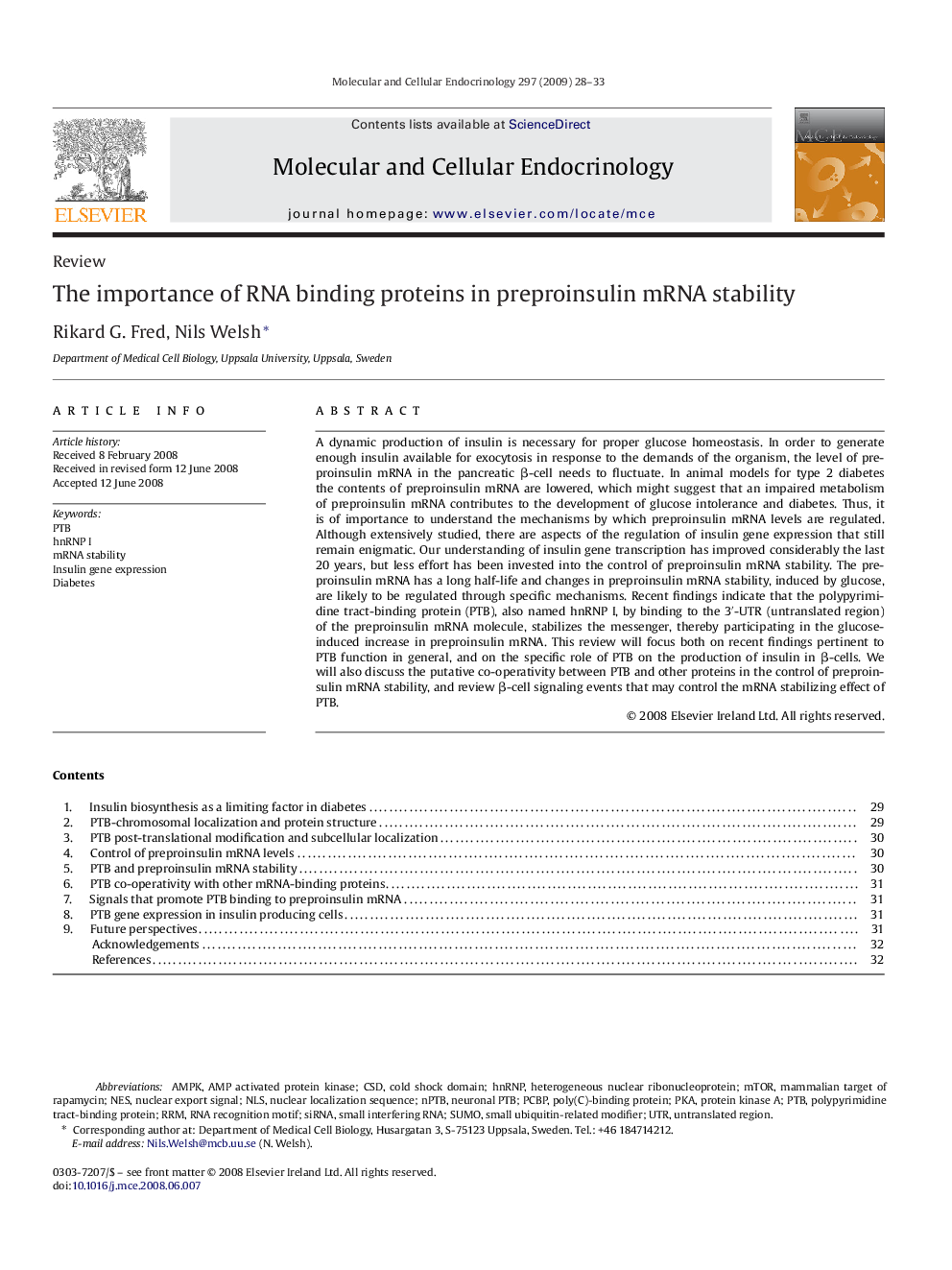| Article ID | Journal | Published Year | Pages | File Type |
|---|---|---|---|---|
| 2197422 | Molecular and Cellular Endocrinology | 2009 | 6 Pages |
A dynamic production of insulin is necessary for proper glucose homeostasis. In order to generate enough insulin available for exocytosis in response to the demands of the organism, the level of preproinsulin mRNA in the pancreatic β-cell needs to fluctuate. In animal models for type 2 diabetes the contents of preproinsulin mRNA are lowered, which might suggest that an impaired metabolism of preproinsulin mRNA contributes to the development of glucose intolerance and diabetes. Thus, it is of importance to understand the mechanisms by which preproinsulin mRNA levels are regulated. Although extensively studied, there are aspects of the regulation of insulin gene expression that still remain enigmatic. Our understanding of insulin gene transcription has improved considerably the last 20 years, but less effort has been invested into the control of preproinsulin mRNA stability. The preproinsulin mRNA has a long half-life and changes in preproinsulin mRNA stability, induced by glucose, are likely to be regulated through specific mechanisms. Recent findings indicate that the polypyrimidine tract-binding protein (PTB), also named hnRNP I, by binding to the 3′-UTR (untranslated region) of the preproinsulin mRNA molecule, stabilizes the messenger, thereby participating in the glucose-induced increase in preproinsulin mRNA. This review will focus both on recent findings pertinent to PTB function in general, and on the specific role of PTB on the production of insulin in β-cells. We will also discuss the putative co-operativity between PTB and other proteins in the control of preproinsulin mRNA stability, and review β-cell signaling events that may control the mRNA stabilizing effect of PTB.
